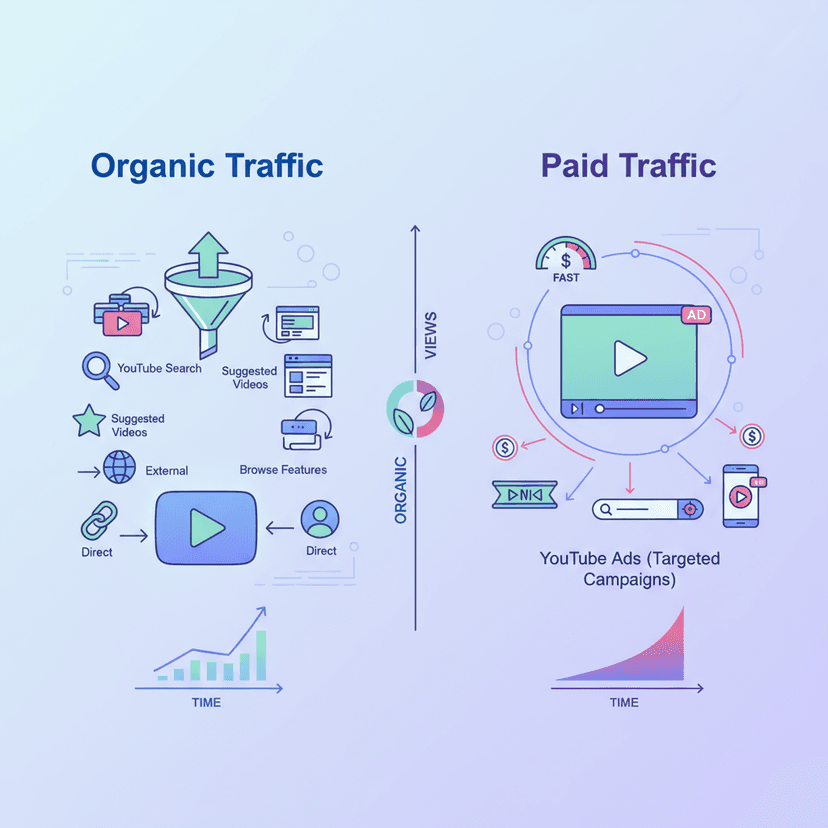Over the past few years, marketers have tried to define themselves as “storytellers.” Because communication between brands and people is very important and plays a role in every industry. The stories told, whether they are words, text, or graphics, directly affect people’s decisions. If the storyline is interesting and can invite people to follow along well, it’s like a gatekeeper, inviting anyone to enter, just like rows of books on bookshelves that entice people to come and read.
Every impressive story, whether it’s a novel, drama, movie, or television series, always begins with a conflict to drive the story forward. For example, the protagonist struggles to get what they want amidst many obstacles, but these tensions are captivating and make people follow along eagerly because they want to know what will happen next. Of course, a story without elements of conflict may be smooth and predictable. Looking at online advertising campaigns today, you’ll find that storytelling starting with a conflict is something to avoid because it might have negative effects or damage the brand’s image. Many brands try to avoid themes in storytelling that are flashy.
However, this doesn’t mean that brands should start casting characters like Freddy Krueger and Hannibal Lecter, both famous slasher film characters, into Cornflakes advertising campaigns. Even if a tagline like “Cereal Killers” would be trendy on social media, this article highlights 4 strategies for storytellers that, once known, can be immediately adapted.
1. Character vs. Self
Many novels and movies have content that incorporates obstacles and conflicts into each episode, making the story more engaging. However, for advertising campaigns that identify brand symbols directly, marketers generally try to avoid storytelling with this type of content.
However, storytelling in the style of “Character vs. Self,” or conflict arising from within oneself, is a way of telling stories that focuses on getting people to stop worrying about the brand and emphasizes empathy, without feeling awkward about talking about it. For example, the Libresse sanitary pad brand has an advertising campaign called #Bloodnormal, where the brand sees menstruation for women being made dirty and shameful to talk about. Buying sanitary pads sometimes feels like secretly buying illegal items, even though it’s a normal occurrence in the body. What happened was that the brand used real red blood-like paint in the sanitary pad advertisement, simply giving consumers reason to stop being afraid. The brand must stop being afraid first.
2. Character vs. Character
Storytelling in the style of “Character vs. Character” is a classic way of telling stories. For example, in famous blockbuster films like David and Goliath or King Kong vs. Godzilla, this storytelling is a comparison between competing brands of the same type of product, such as advertising campaigns like Pepsi vs. Coke or Burger King vs. McDonald’s.
However, don’t forget that using competitor brands as one of the characters in a story may unintentionally shine a spotlight on the competitors. It can be said that “Character vs. Character” storytelling is suitable for smaller brands that need to make their advertising campaigns entertaining to a wide audience, while leading brands should avoid getting involved in challenges from campaigns of this type.
3. Character vs. Nature
Like other storylines, brands try to avoid telling stories using conflicts related to the environment because they fear potential problems that could damage the brand’s image. But in today’s world, consumers no longer believe the words brands proclaim that “my products are good.” Instead, the trend now is to question brands about what benefits they can provide and how they can impact the world. Of course, you can use nuanced storytelling that can lead to branding as environmentally friendly. For example, the Republic of Palau’s advertising campaign, which designed a campaign called Palau Pledge, seamlessly linked immigration policy with environmental conservation due to tourist problems that often leave trash and destroy coral reefs. The Palau Pledge solved the problem by creating a new type of visa and requiring all tourists to sign a document agreeing to participate in environmental conservation before traveling to visit. As a result, this campaign can attract people to participate in change through a non-difficult method.
4. Character vs. Society
Choosing to tell stories using social conflicts is becoming increasingly popular because they are interesting stories and many of them are issues close to people. However, it should be used with extra caution because you must be sure that the brand has a relevant story to clearly address the issue and constantly check the accuracy of the information. Don’t forget that today’s new consumers will become the main consumers in the future and are a group that views brands as needing to connect with various social issues, even sensitive ones like politics. In short, before starting an advertising campaign, you should ask yourself what social issues the brand is truly interested in and what approaches the brand can take to help resolve those issues. If done correctly, understanding how to communicate social issues with nuance will certainly create a ripple effect, making the brand a focus of society.
The examples in this article may seem contrary to marketing communication, which must be cautious to maintain a good brand image by emphasizing positive stories. However, of course, creating compelling communication requires stories that can capture people’s attention from the first moment. This is why there must always be conflict as the starting point of communication in any advertising campaign. One of the greatest storytellers of all time, John le Carré, said, “A cat sitting on a mat” is not a story, but “a cat sitting on the dog’s mat” is the beginning of all stories. If you are going to create an advertising campaign, always ask yourself if your communication only starts with The Cat Sat on The Mat?
Get Digital Marketing Consulting from Relevant Audience
Relevant Audience is a company providing services as a Digital Performance Marketing Agency, with the main goal of providing digital marketing services to businesses to reach target audiences who are looking for products or services at the right time, place, and device through various online channels. Our services cover everything from Search Marketing, Social Media Ads, Search Ads, and SEO (Search Engine Optimization) to Influencer Marketing and are also part of the Google Partners program.
For more information
Tel: 02-038-5055
Email: info@relevantaudience.com
Website: www.relevantaudience.com







